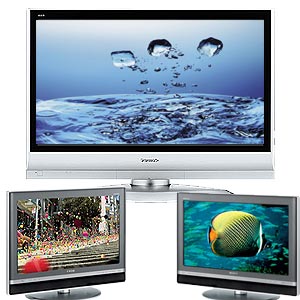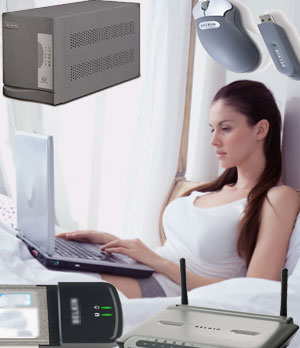Plasma Television

If you want to replace your old television with a new one that saves space and offers good digital clarity, with value for money, take a look at the plasma television. The thin, flat screen plasma TV with crisp, clear images on a huge screen with a wall mounting option is a favorite choice of consumers who seek to complement home décor and home entertainment system alike.
With a plasma television, you are ready to create a virtual theatre in your home. Watching movies, sporting events, news, documentaries or any other program, plasma television will distinctly enhance your TV viewing experience. Here is a guide to plasma television buying. You get to read all information you ought to know before buying a flat screen plasma television set. Get an insight into plasma technology.
Large Screen Television revolution
Large screen TV were once predominantly CRT types. CRT type direct view TVs rarely are beyond 42 inches (diagonally viewed) and most big size TVs are front projection or rear projection types. The image quality of CRT is still exceptional considering their superior black level and contrast ratios. Only the size (depth) of CRT and the inherent power requirement ( a 29 inch conventional CRT TV consumes typically around 250 W of electricity when working normally ) make other technologies seem attractive.
The arrival of newer plasma technology and its nearest competitor the LCD (liquid crystal display) has made the ubiquitous television more decor friendly. The CRT models demanded the use of heavier and bulkier picture tubes. In a plasma television, the cathode ray tube is done away with and the use of plasma technology has led to light weight television panels that are slim, thin and really sleek.
Digital Television (DTV), Digital videodisc (DVD-Video), digital satellite broadcasts and computer video, plasma technology in plasma TV is the perfect format to enjoy improved image quality of all these digital video sources. There are other competing technologies like DLP - Digital Light Processing - primarily used in projectors and LCoS - Liquid Crystal on Silicon - which is again used in projection televisions.
The latter uses liquid crystals instead of the matrix of mirrors used in DLP. Flat screen plasma TVs present clear images that do not wash out under bright lights. These TVs offer ease of mounting and viewing from extreme angles. Another advantage of plasma technology is that it is not affected by magnetic fields. With its high-impact picture quality and plug and play facilities, plasma TVs are ideal for video conferencing and home theaters.
Plasma technology
Plasma technology closely resembles the technology used in fluorescent bulbs. The plasma TV display panel is flat, now commonly used for large TV displays (for 32 inches and above). The flat screen enables uniform image with no edge distortion. The display panel consists of an array of tiny cells called pixels. The hundreds of thousands of pixels are made up of three fluorescent lights, namely red, green and blue light.
The pixels contain phosphors and are positioned between two plates of glass. The plates are separated by a narrow gap in which a thin layer of neon-xenon gas mixture is coated right during the manufacturing process. When electrical impulses enter the gas, the gas is electrically charged and turns into plasma.
Ultraviolet photons are released. The ultraviolet radiation interacts with the phosphor lining thus giving off energy in the form of visible light producing exceptionally bright and colorful displays on the flat screen. The images are bright as during the process each of the hundreds of thousands of pixels is lit individually. This attributes to good viewing from almost every angle.
Guide to Plasma TV buying
Determine budget: Since the time the first Plasma TV was introduced in the market, the prices have fallen drastically making plasma TV within the reach of more and more consumers. Determine your budget and decide on the features that ensure value for money. The screen size highly influences the price. Smaller screens are available for as less as $2000. The price of plasma TVs over the above the typical 42 inches increases drastically.
Define screen size: Select the largest screen size your room (include the viewing distance) can accommodate. This eliminates the need to sit too close or too far for an enjoyable viewing experience. Further, ensure that a minimum of 3 inches space is left vacant around the unit and the entire room particularly near the unit is sufficiently ventilated. If you are not sure about the optimal Plasma TV screen size suitable for your room, use guidelines available with the retailer.
Check display resolution
Higher the resolution, better the picture quality on the screen and sound. Plasma HDTV -high definition TV uses a digital display, the new and latest standard for broadcasting set by the Federal Communications Commission. In a Plasma HDTV, a million or more pixels combine to create clearer and crisper images. The pictures appear sharper and more realistic compared to a normal TV. You can see the difference, enjoy 'an in-house theatre experience' especially while watching theatrical movies on plasma TV.
A plasma HDTV enhances TV viewing experience as you benefit from higher picture sharpness, larger picture, more colors, wider picture as well as multi-channel digital CD quality. As a consumer, look out for a plasma HDTV with a normal native pixel resolution of 1920 x 1080 or slightly lesser.
Plasma TV is well known for its color accuracy. However, the over-all picture quality on screen is also influenced by other features like color reproduction, brightness and contrast. When you are in the process of plasma television review, check out the contrast ratio, higher the ratio the more 'real' the picture appears. The lowest is 800:1 and the new Plasma TV models in the market offer 4000:1 contrast ration.
If you are curious, DLP projection TV offers about 2500:1 contrast ratio while LCoS projection televisions offer around 4000:1. CRT offers in excess of 14000:1 contrast ratio. Test how colors look on the screen, whether they look natural and accurate and if you can spot the subtle variations in color.
Connectivity and features
TV antenna, cable TV line, Camcorder, DVD player or game stations like play station and X-box, a DVI or D-Sub port that supports PC pictures on to the plasma TV; these are the greatest compatibility options. If you are a computer professional who needs to work with multiple video formats, Plasma TV is of immense support as it can display most color television standards such as NTSC, PAL, SECAM and accept many varied signal inputs like composite Video (CVBS) - Composite Video with Blanking Signal - , VGA and SVideo.
The features vary with manufacturers of Plasma TV. Intense competition amongst competitors helps consumers enjoy newer features. Full Dual Screen and Picture in Picture are offered by almost all manufacturers, which allow you to see more than one program at a time. Review some of the present top-selling Plasma TVs to get updated information about the latest models with newer features. Common features are flashier styles, wide viewing angle, stand mounting or wall mounting option, programmable timer, sleep timer, parental lock, remote control, headphone socket, integrated dual TV digital tuner, built in speakers, detachable bottom speakers, etc.
The Plasma TV advantage
- Uses the state-of-the-art TV technology
- Slim, space-saving design blends with any home decor
- Light weight
- Wide screen aspect ratio for a real theatre experience at home
- Higher resolutions than conventional TV sets
- No scan lines, built-in line doubling improves image quality
- Smooth, realistic images
- Horizontal or vertical mounting option
- Wide 160° viewing angle, all four directions.
- Flat screens defy edge distortions
- Exceptional uniform color accuracy
- Absence of electronic beams extends immunity from magnetic fields
- Compatible with any video format.
Plasma TV buying tips
- Check out plasma TV reviews such as CNET and Consumer reports.
- Assimilate information to determine the strengths and weaknesses of different models.
- Check TV sets in more than one local retail shop or online retailers.
- Compare prices, check warranty period, the defects that will be covered by the manufacturer.
Top of the Page: Plasma Television
Tags:#plasma television #plasma television review #flat screen plasma TV
 Shopping Guide
Shopping Guide Frugal Shopping Tips
Shopping Bags
Rolling Bags for Shopping
Gym Bag
Women Accessories
Texting Gloves
Women's Wallet
Belt Buckles
Clutch Bags
Women Personal Care
 Clothing Shopping
Clothing Shopping Sleeping Eye Mask
Laptop Backpack
Women's Briefcase
Women's Jacket
Women's Shoes
Summer Footwear Trends
Wide Width Shoes for Women
Women's Flat Shoes
Slippers for Women
Sarong
Summer Shoes
High Heels
Bridal Shoes
Designer Handbag
Outdoor Clothing
Shibori Design Techniques
Batik Fabric
Tie Dye Fabric
Plus Size Swim Wear
Facial Steamers
Stress Relief Products
Gadgets for Women
RFID Technology - RFID Application
Residential Thin Film Solar Panels
Renewable Energy Gadgets
Pepper Spray
Lift Chair
Laptop accessory
Device GPS Tracking
Plasma Television
Polarized Sun Glasses
Home Blood Pressure Monitor
Air Purifier
Car Shopping
Pet Carrier
Brochure Holder
Lanyard
Baby Stroller
Step Pedometer
Jewelry
 Jewelry and Ornaments
Jewelry and Ornaments Coral Jewelry
Replica Watch
Expensive Engagement Rings
Vintage Jewelry
Gifts and Occasions
 Valentine Day Gift Shopping
Valentine Day Gift Shopping Mother Day Gift
Handmade Baby Gift
Gifts under $50
Unusual Gift Ideas for Women
Baby Shower Gift
Unique Housewarming Gifts
Unique Wedding Favor
Winter Wedding Ideas
Holiday Shopping
Holiday Shopping Tips
Christmas Shopping Online Trip
Christmas Decoration Idea
Christmas Gift Gadget
Corporate Christmas Gift Idea
Stocking Stuffers
Christmas Candy Recipe
Currency Conversion
Top of the Page: Plasma Television
Popularity Index: 101,130

